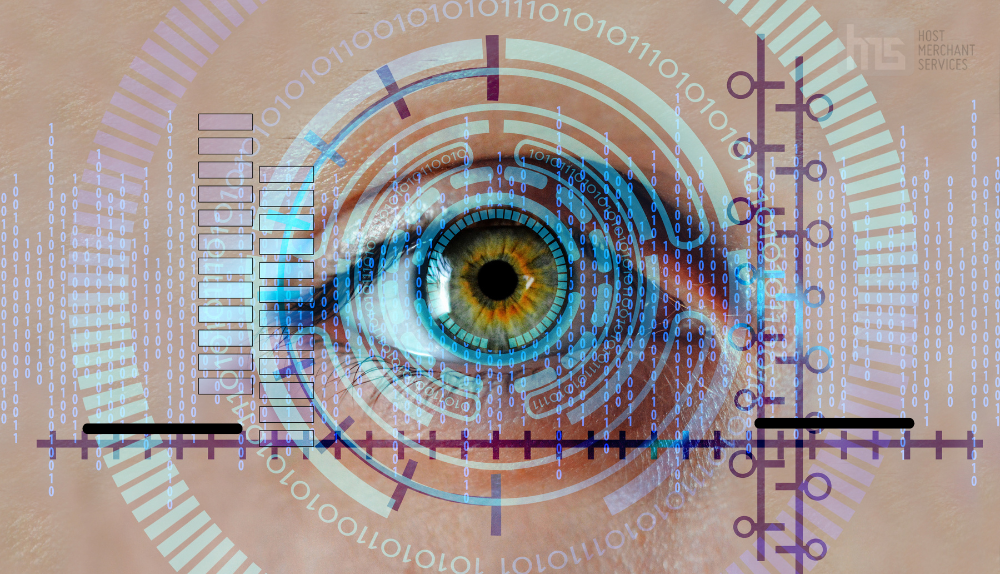
What Are Biometric Payments? A Guide for 2025
- 22nd Jun, 2023
- | By max
- | Uncategorized
Biometric payments have emerged as a revolutionary payment method in the digital age, incorporating unique physical and behavioral characteristics of individuals for secure and convenient transactions. In this guide, we will delve into the world of biometric payments, exploring their definition, significance, and why understanding them is crucial in 2023 and beyond.
Biometric payments utilize biometric modalities such as fingerprints, facial recognition, and iris scanning to authenticate and authorize transactions. This innovative approach offers a higher level of security, efficiency, and user experience compared to traditional payment methods. As the digital landscape evolves, biometric payments are poised to play a pivotal role in shaping the future of transactions.
The objective of this guide is to provide you with a comprehensive understanding of biometric payments, their implementation, security considerations, benefits, limitations, and the trends shaping the industry. By delving into this topic, you will gain valuable insights into the transformative potential of biometric payments and how they can revolutionize the way we conduct transactions in 2023 and beyond.
Understanding Biometric Payments
Definition of biometric payments:
Biometric payments refer to the use of unique physical or behavioral characteristics of individuals, known as biometrics, for the authentication and authorization of financial transactions. These biometric modalities include fingerprints, facial recognition, iris scanning, voice recognition, and even behavioral traits like gait recognition.
Biometric modalities used in payments
Fingerprint recognition: This modality involves scanning and analyzing the unique patterns present on an individual’s fingertip to verify their identity.
Facial recognition: Facial recognition technology captures and analyzes distinct facial features, such as the arrangement of eyes, nose, and mouth, to authenticate individuals.
Iris scanning: Iris scanning technology captures the unique patterns in an individual’s iris, the colored part of the eye, to verify their identity.
Voice recognition: Voice recognition technology analyzes the unique vocal characteristics and patterns in an individual’s voice to authenticate them.
Behavioral traits: Certain biometric payment systems also consider behavioral traits, such as gait recognition or typing patterns, to verify the identity of individuals based on their unique behavioral characteristics.
How biometric payments work and their underlying technologies:
Biometric payment systems utilize specialized hardware, such as fingerprint scanners or cameras, to capture biometric data from users. The data is then processed using advanced algorithms and compared against previously registered biometric templates stored securely in a database. If the captured biometric data matches the stored template, the payment transaction is authorized.
Underlying technologies used in biometric payments include image processing, pattern recognition, machine learning, and encryption. These technologies ensure the accuracy, security, and efficiency of biometric authentication processes.
Advantages of biometric payments over traditional payment methods
Enhanced security: Biometric payments provide a higher level of security compared to traditional methods like PINs or passwords since biometric traits are unique to individuals and difficult to replicate.
Convenience and speed: Biometric payments eliminate the need for physical cards or remembering passwords, making transactions faster and more convenient.
Reduced fraud: Biometric traits are difficult to forge or steal, reducing the risk of fraudulent activities such as identity theft or card skimming.
Improved user experience: Biometric payments offer a seamless and intuitive user experience, eliminating the need for physical interactions or memorization of credentials.
Scalability: Biometric payment systems can accommodate a large user base without compromising security or performance, making them suitable for businesses of all sizes.
Understanding the advantages and functionalities of biometric payments is essential to harness their potential and leverage them effectively in the evolving digital landscape of 2023.
Biometric Payment Systems and Implementation
Biometric payment systems and their components:
Biometric payment systems consist of various components working together to enable secure and efficient transactions. The key components include:
Biometric sensors or scanners: These devices capture the biometric data, such as fingerprints or facial features, required for authentication.
Biometric templates: The captured biometric data is converted into unique templates, which serve as a reference for comparison during subsequent authentication attempts.
Biometric matching algorithms: These algorithms analyze the captured biometric data and compare it with the stored templates to determine a match or non-match.
Secure storage and processing: The biometric templates and transaction data are securely stored and processed to ensure privacy and prevent unauthorized access.
Payment infrastructure integration: Biometric payment systems are integrated with existing payment infrastructure, such as point-of-sale (POS) terminals or mobile payment platforms, to facilitate seamless transactions.
Key players in the biometric payment industry
Several key players drive innovation and advancements in the biometric payment industry. These include:
Technology companies: Companies like Apple, Samsung, and Google have introduced biometric payment features in their devices, such as Apple’s Face ID and Samsung’s fingerprint scanner.
Payment processors: Companies like Mastercard and Visa are actively involved in developing and implementing biometric payment solutions, partnering with banks and merchants.
Biometric technology providers: Companies like NEC, IDEMIA, and Fingerprint Cards specialize in developing biometric sensors, algorithms, and software for payment applications.
Examples of successful biometric payment implementations in various sectors:
Biometric payments have gained traction in various sectors, showcasing their potential across industries. Some notable examples include:
Retail: Retailers have implemented biometric payment systems to enhance checkout experiences, reduce fraud, and improve customer convenience. For instance, Amazon Go stores utilize biometric technology to enable seamless, cashless shopping experiences.
Banking: Banks have adopted biometric payments to provide secure and frictionless transactions. For example, some banks allow customers to authenticate mobile banking transactions using their fingerprints or facial recognition.
Transportation: Biometric payments are being utilized in transportation systems, such as airports and public transit, for ticketing and access control. Facial recognition technology is used for fast and contactless passenger authentication.
Challenges and considerations in implementing biometric payment systems:
Implementing biometric payment systems involves several challenges and considerations, including:
Privacy concerns: The collection and storage of biometric data raise privacy concerns, and businesses must comply with regulations and ensure robust data protection measures.
User acceptance and adoption: Some individuals may have reservations about sharing biometric information, necessitating clear communication and education to gain user acceptance.
Technical complexity: Implementing biometric payment systems requires sophisticated technology integration, compatibility with existing infrastructure, and seamless user experiences.
Accuracy and reliability: Biometric systems must achieve high accuracy rates and minimize false acceptance or rejection rates to ensure reliable and convenient user experiences.
Regulatory compliance: Biometric payment systems must comply with industry standards and regulations to safeguard user data and prevent misuse.
By understanding these implementation aspects, businesses can navigate the challenges and considerations associated with biometric payment systems to successfully integrate them into their operations and provide secure, convenient, and efficient payment experiences.
Security and Privacy Aspects of Biometric Payments
Importance of security in biometric payment transactions:
Security is paramount in biometric payment transactions to protect the integrity of personal and financial information. Biometric data, being unique and irreplaceable, requires robust security measures to prevent unauthorized access and misuse. Failure to ensure proper security can lead to identity theft, fraud, and breaches of sensitive data.
How biometric data is protected and stored:
To protect biometric data, several security measures are implemented:
Encryption: Biometric data is encrypted during transmission and storage to prevent unauthorized access.
Secure storage: Biometric data is securely stored in a protected environment, typically using strong encryption and access controls.
Biometric template storage: Instead of storing the original biometric data, biometric systems typically store templates derived from the data. These templates are useless for reproducing the original biometric traits, enhancing privacy and security.
Multi-factor authentication: Biometric data is often combined with other authentication factors, such as passwords or tokens, to add an additional layer of security.
Regulations and standards governing biometric payment security and privacy:
Regulations and standards play a crucial role in ensuring the security and privacy of biometric payment systems. Some notable regulations and standards include:
General Data Protection Regulation (GDPR): GDPR provides guidelines for the collection, processing, and storage of personal data, including biometric data, within the European Union.
Payment Card Industry Data Security Standard (PCI DSS): PCI DSS establishes security requirements for organizations handling payment card data, including biometric payment systems.
ISO/IEC 24745: This international standard outlines guidelines for the protection of biometric information, covering aspects such as data storage, access control, and encryption.
Measures businesses and consumers can take to ensure secure biometric payments:
Strong authentication protocols: Implementing robust authentication protocols, including multi-factor authentication, ensures that biometric data is used in combination with other factors for enhanced security.
Data encryption: Employing strong encryption algorithms for biometric data during transmission and storage adds an additional layer of protection against unauthorized access.
Regular security audits and updates: Businesses should conduct regular security audits to identify vulnerabilities and promptly address any security issues. Keeping biometric payment systems up to date with the latest security patches and updates is crucial.
User consent and transparency: Obtaining explicit user consent and providing transparent information about how biometric data is collected, used, and protected builds trust and ensures compliance with privacy regulations.
User education: Educating consumers about the security measures in place, the benefits, and the privacy safeguards associated with biometric payment systems helps build confidence and encourages responsible usage.
By adhering to relevant regulations, implementing robust security measures, and educating users, businesses and consumers can work together to ensure the security and privacy of biometric payment transactions, fostering trust in this innovative payment method.
Benefits and Limitations of Biometric Payments
Advantages of biometric payments for businesses and consumers:
Enhanced security: Biometric payments offer a higher level of security compared to traditional payment methods, reducing the risk of identity theft and fraud.
Convenience and speed: Biometric payments eliminate the need for physical cards or passwords, providing a seamless and efficient transaction experience.
Frictionless authentication: Biometric authentication is quick and easy, improving the overall user experience and reducing transaction times.
Reduced reliance on physical items: With biometric payments, there is no need to carry physical cards or remember complex passwords, making transactions more convenient and less prone to loss or theft.
Scalability and interoperability: Biometric payment systems can be integrated with existing payment infrastructure, allowing businesses to leverage their current systems while enhancing security and user experience.
Enhanced user experience and convenience of biometric payments:
Seamless authentication: Biometric payments eliminate the need for manual input or physical interaction, providing a more intuitive and user-friendly experience.
Faster transactions: Biometric authentication is quick, enabling faster checkout processes and reducing waiting times for customers.
One-touch convenience: With a simple touch or glance, users can authenticate transactions, enhancing the overall convenience and ease of use.
Universal accessibility: Biometric traits are inherent to individuals, making them accessible to a wide range of users, including those with physical disabilities.
Limitations and potential concerns associated with biometric payments:
Privacy concerns: The collection and storage of biometric data raise privacy concerns, as this sensitive information requires proper protection and adherence to privacy regulations.
Unreliable authentication in some scenarios: Biometric authentication may be challenging in certain situations, such as when the user’s biometric traits are altered due to injury or aging.
False acceptance and rejection rates: Biometric systems may have a small possibility of false acceptance or rejection, which could inconvenience users or compromise security.
Lack of standardization: There is a need for industry-wide standards to ensure interoperability and compatibility across different biometric payment systems.
Comparison of biometric payments with other emerging payment technologies:
Biometric payments offer unique advantages when compared to other emerging payment technologies:
Compared to mobile payments: Biometric payments provide a higher level of security, as they are based on unique biological traits, while mobile payments rely on device-based security measures.
Compared to contactless payments: Biometric payments offer an additional layer of security through personal authentication, whereas contactless payments mainly rely on near-field communication (NFC) technology.
Compared to cryptocurrency payments: Biometric payments provide a more familiar and user-friendly experience, leveraging existing payment infrastructure, while cryptocurrency payments involve complex processes and require broader adoption.
Understanding the benefits and limitations of biometric payments helps businesses and consumers make informed decisions about adopting and utilizing this payment method, ensuring a balance between security, convenience, and privacy.
Biometric Payments in 2023 and Beyond
Current trends and advancements in biometric payment technology:
Continuous improvements in accuracy and speed: Biometric payment technologies are evolving rapidly, with advancements in sensors, algorithms, and machine learning techniques, leading to higher accuracy rates and faster authentication.
Multi-modal biometrics: The integration of multiple biometric modalities, such as combining fingerprint and facial recognition, offers enhanced security and accuracy in biometric payment systems.
Wearable biometrics: The integration of biometric sensors in wearable devices, such as smartwatches and fitness trackers, opens up new possibilities for seamless and convenient biometric payments.
Biometric authentication in the cloud: Cloud-based biometric authentication solutions allow for centralized authentication processes, enabling secure and scalable biometric payments across multiple devices and platforms.
Predictions for the future of biometric payments:
Increased adoption and acceptance: Biometric payments are expected to gain wider acceptance among businesses and consumers as they offer improved security and convenience.
Expansion into new industries: Biometric payment systems are likely to expand beyond retail and banking sectors into areas like healthcare, hospitality, and government services.
Integration with emerging technologies: Biometric payments may be integrated with other emerging technologies, such as blockchain and Internet of Things (IoT), to enhance security and streamline transactions.
Continuous innovation: Ongoing research and development efforts will drive innovation in biometric payment technologies, leading to further improvements in accuracy, speed, and user experience.
Potential impact of biometric payments on industries and consumer behavior:
Enhanced security and fraud prevention: Biometric payments can significantly reduce the risk of fraud and identity theft, providing a higher level of security for businesses and consumers alike.
Improved customer experience: Biometric payments offer a seamless and convenient transaction experience, leading to increased customer satisfaction and loyalty.
Shift towards contactless payments: The COVID-19 pandemic has accelerated the adoption of contactless payment methods, including biometric payments, as consumers seek touch-free and hygienic payment options.
Transformation of customer interactions: Biometric payments have the potential to transform customer interactions, allowing for personalized and frictionless experiences across various touchpoints.
Challenges and opportunities for businesses in adopting biometric payment systems:
Data privacy and regulatory compliance: Businesses need to navigate privacy regulations and ensure secure handling and storage of biometric data to build trust with consumers.
Integration with existing systems: Adopting biometric payment systems may require integration with existing payment infrastructure, posing technical and operational challenges.
User acceptance and education: Educating consumers about the benefits and security measures of biometric payments is essential for gaining user acceptance and building confidence in the technology.
Collaboration and industry standards: Collaboration among industry stakeholders, including technology providers, payment processors, and regulatory bodies, is crucial for establishing interoperability standards and addressing common challenges.
Final thoughts
The transformative power of biometric payments in the digital era is undeniable. From enhanced security to improved user experience, biometric payments offer a compelling solution for businesses and consumers alike. As technology continues to evolve, embracing and harnessing the potential of biometric payments will be key for organizations to stay competitive, foster innovation, and meet the evolving needs of the digital landscape. By embracing this transformative payment method, we pave the way for a more secure, convenient, and seamless digital future.


